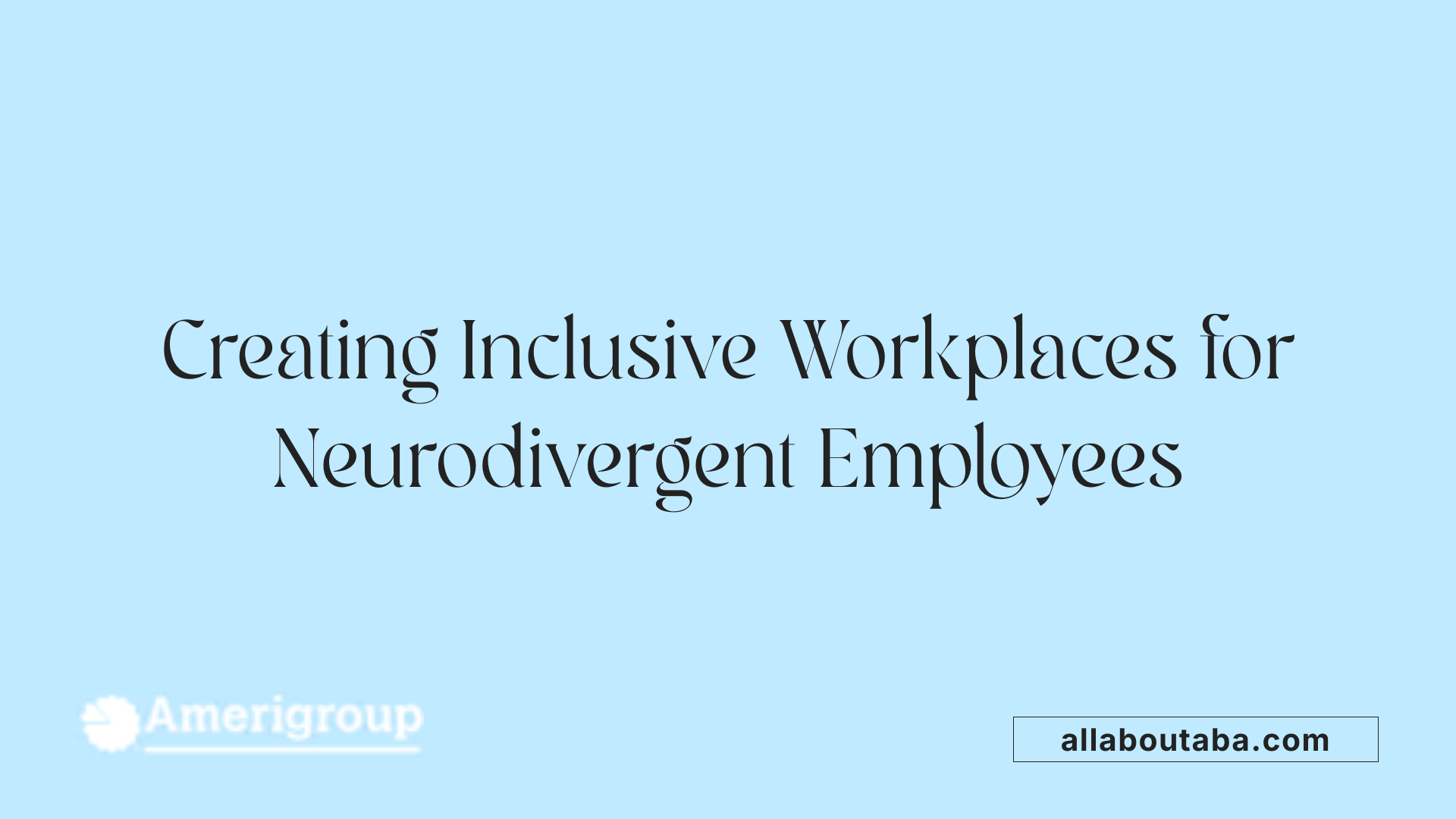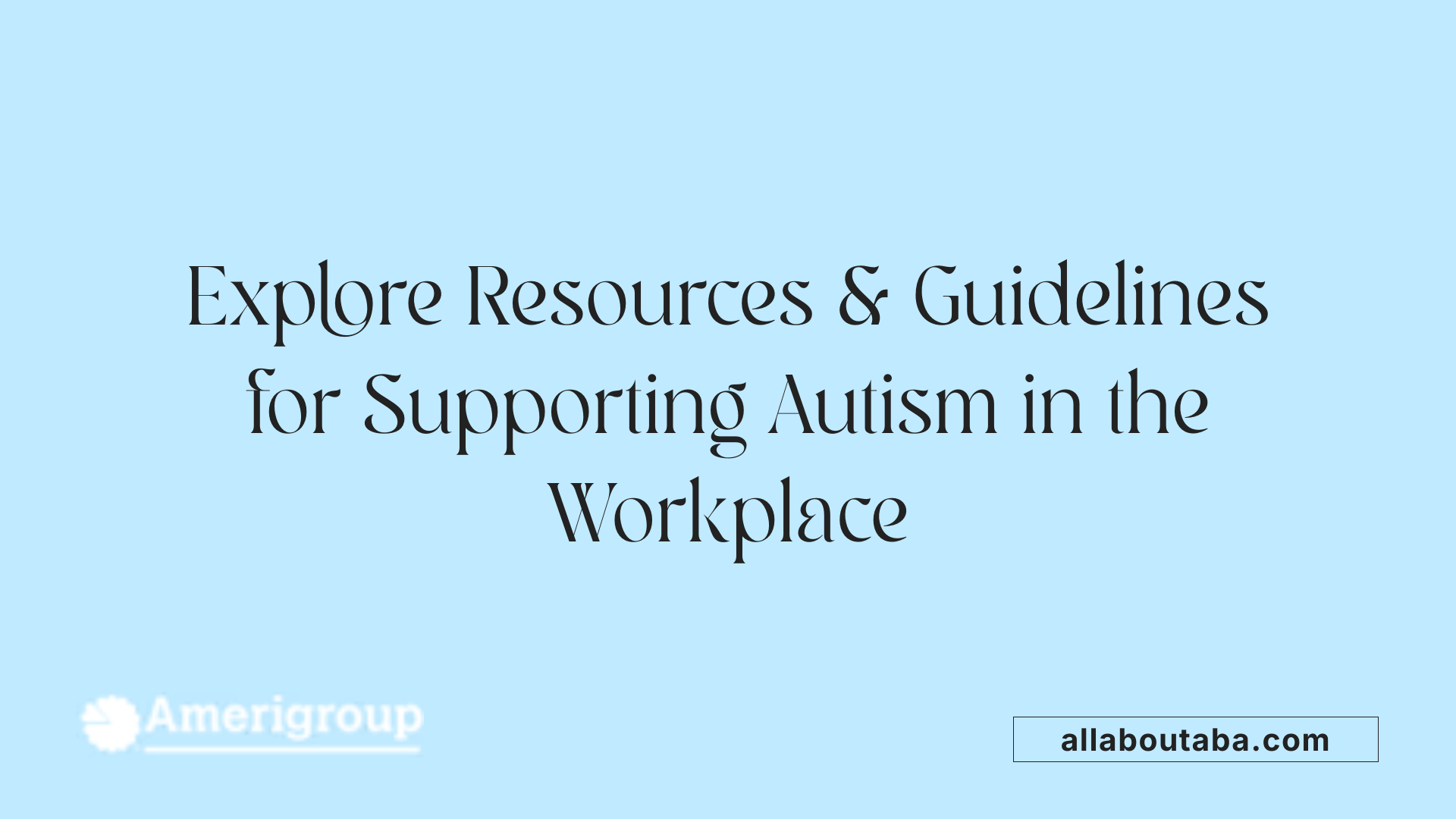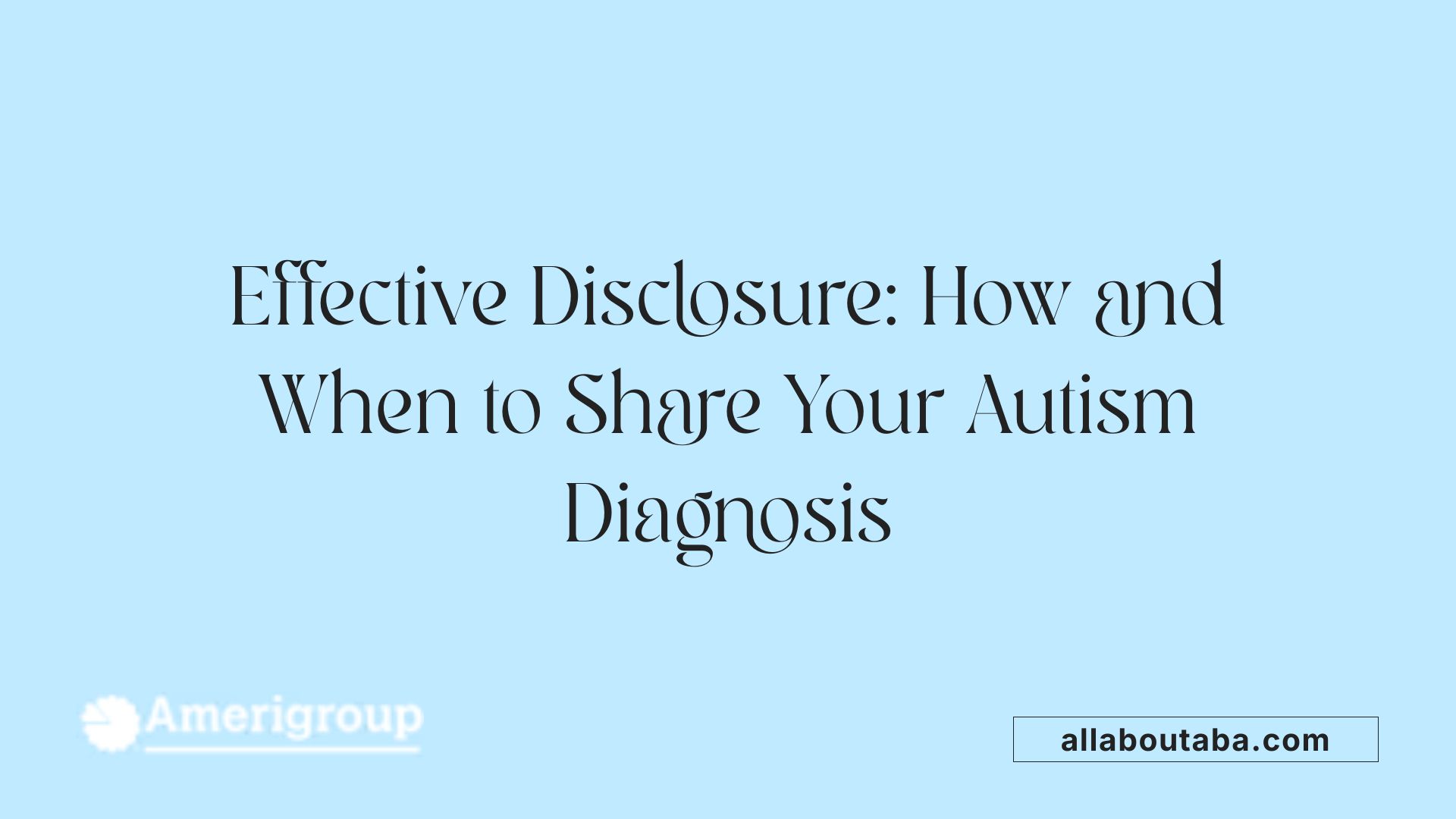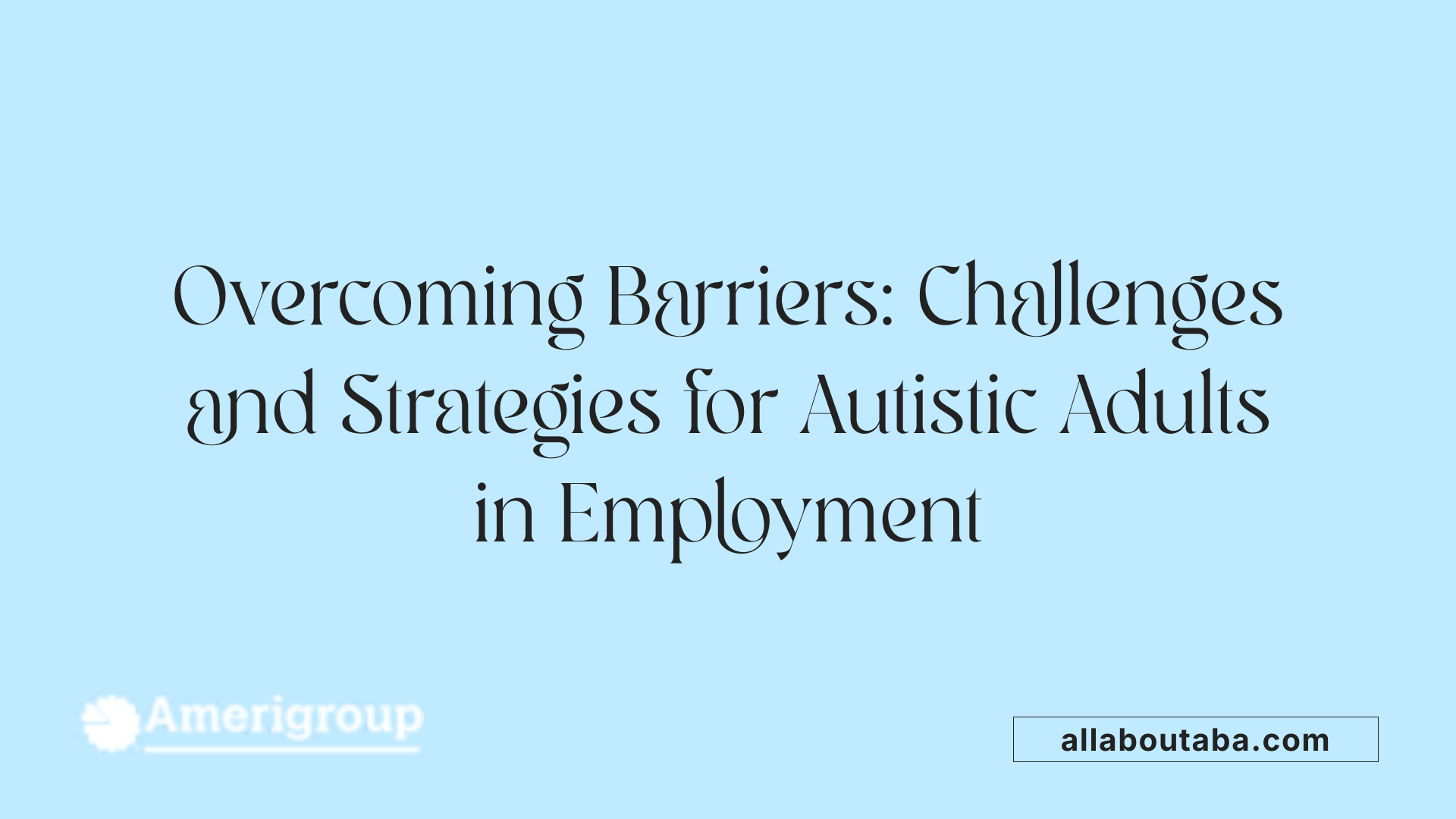Understanding Autism-Friendly Workplace Supports
Workplaces that actively support employees on the autism spectrum not only promote fairness and inclusion but also unlock valuable skills such as high attention to detail, honesty, and productivity. Developing an autism-friendly environment involves legal compliance, tailored accommodations, and a culture of understanding. This guide explores the essential components of workplace support for autistic employees, legal protections, effective accommodations, and strategies for fostering inclusion, all supported by trusted research and resources.
Legal Protections and Rights for Autistic Employees

What legal protections and rights support autistic employees in the workplace?
Autistic employees are safeguarded by various laws designed to prevent discrimination and promote equality. In the United States, the Americans with Disabilities Act (ADA) provides strong protections by requiring employers to make reasonable accommodations for qualified individuals with autism. These accommodations can include flexible work schedules, sensory environment adjustments, clear communication channels, and job coaching, all implemented through a collaborative process called the interactive accommodation process.
In the UK, equality laws such as the Equality Act 2010 prohibit discrimination on grounds of disability, including autism, compelling employers to make reasonable adjustments to support neurodiverse employees. These adjustments might entail modified lighting and noise levels, structured routines, or specific communication methods.
Section 504 of the Rehabilitation Act in the US also ensures equal access to federally funded programs and employment for individuals with autism. Beyond legislation, support schemes like the UK’s Access to Work program provide practical and financial aid, such as hiring job coaches or purchasing specialized equipment.
In addition to legal mandates, numerous government programs and benefits support autistic workers. For example, the UK offers Vocational Rehabilitation services, while federal benefits like Social Security Disability Insurance (SSDI) and Supplemental Security Income (SSI) assist in securing employment and financial stability.
These legal protections and support programs collectively work to enhance employment opportunities, encourage inclusive workplaces, and uphold the rights of autistic individuals to fair and equitable treatment.
Understanding Reasonable Accommodations for Autism in the Workplace
What are reasonable accommodations for autistic employees at work?
Reasonable accommodations involve practical modifications tailored to support employees with autism, ensuring they can perform their jobs effectively. These accommodations might include changes to physical workspace features, such as adjustable lighting, noise-canceling headphones, or creating quiet zones to minimize sensory overload. Flexible work options are also common, like adjustable hours or remote work, which help manage stress and sensory sensitivities.
Employers may provide auxiliary supports such as communication devices or offer mentorship programs to assist social and communication challenges. Importantly, employees should disclose their specific difficulties and suggest preferred adjustments. This open dialogue is part of the collaborative process to develop effective accommodations. Most adjustments are low-cost or free, and they uphold legal standards, such as those outlined in the UK’s Equality Act 2010, promoting an inclusive workplace where autistic individuals can thrive.
Cultivating Inclusive and Supportive Work Environments
 Creating workplaces that truly support autistic and neurodivergent employees involves various strategies aimed at fostering acceptance and understanding. Employers should develop a culture rooted in inclusion by implementing policies that recognize and accommodate diverse needs. This includes offering sensory-friendly spaces, such as quiet rooms or areas with adjustable lighting, and providing flexible work arrangements like remote work or adaptable schedules. The use of assistive technologies—such as speech-generating devices, visual communication aids, or organizational apps—also plays a crucial role in enabling these employees to perform their best.
Creating workplaces that truly support autistic and neurodivergent employees involves various strategies aimed at fostering acceptance and understanding. Employers should develop a culture rooted in inclusion by implementing policies that recognize and accommodate diverse needs. This includes offering sensory-friendly spaces, such as quiet rooms or areas with adjustable lighting, and providing flexible work arrangements like remote work or adaptable schedules. The use of assistive technologies—such as speech-generating devices, visual communication aids, or organizational apps—also plays a crucial role in enabling these employees to perform their best.
Training programs are vital for raising awareness and addressing unconscious biases among staff and management. Regular awareness sessions can dispel myths about neurodiversity, promote respectful communication, and encourage an environment of empathy. Clear, direct communication methods—like written instructions, visual cues, and respecting individual preferences—help reduce misunderstandings and improve collaboration.
Beyond policies and tools, fostering peer support networks and mentorship programs can significantly impact employee well-being and retention. Employee resource groups (ERGs) serve as platforms where neurodivergent individuals can connect, share experiences, and advocate for their needs. Mentorship initiatives pair experienced employees with neurodivergent staff to provide guidance and encouragement.
Ultimately, cultivating an inclusive environment relies on ongoing commitment. Listening to employees about their needs, adjusting accommodations as necessary, and promoting a culture of acceptance ensure that neurodivergent workers thrive. Such efforts not only benefit individual employees but also enrich the organizational culture—creating a diverse, flexible, and productive workplace that values all contributions.
Resources and Guidelines for Supporting Autism in Employment

What resources and guidelines are available for employers and HR professionals on autism workplace accommodations?
Employers and HR professionals have access to a wide range of tools and guidelines designed to foster inclusive workplaces for autistic employees. The Job Accommodation Network (JAN) is a primary resource, offering free, confidential advice tailored to individual needs and providing comprehensive toolkits that help implement reasonable workplace modifications. These include practical strategies for adjustments in work environment, communication methods, and job restructuring to support autism spectrum disorder (ASD).
In addition, the U.S. Department of Labor’s Office of Disability Employment Policy (ODEP) provides a detailed JAN Workplace Accommodation Toolkit. This resource offers guidelines on best practices for creating accessible, supportive work environments, ensuring compliance with the Americans with Disabilities Act (ADA). Organizations such as Autism Speaks and the University of Washington have also developed specialized toolkits and playbooks, focusing on actionable steps for employers to build supportive, stigma-free environments, enhance awareness, and provide necessary accommodations.
Regulatory bodies such as the Equal Employment Opportunity Commission (EEOC) and regional ADA centers provide training, guidance, and technical assistance to help organizations understand legal requirements and implement effective inclusion strategies. These resources serve to promote an understanding of autism workplace needs and support compliance with legal standards while fostering a culture of acceptance and accessibility.
Effective Disclosure Strategies and Their Importance

What are effective disclosure strategies and considerations for autistic employees in the workplace?
Disclosing an autism diagnosis in the workplace is a deeply personal decision that requires careful thought and planning. Effective strategies often involve the individual beforehand identifying specific workplace challenges they face and determining the accommodations that could address those issues. This preparation helps articulate clear, targeted information about how autism affects work tasks, which can foster understanding and support from colleagues and supervisors.
Timing and context are crucial. Disclosing too early or in an unsupportive environment may lead to misunderstandings or stigma, while waiting for a trusted supervisor or HR representative can help ensure a supportive response. Choosing the right person to disclose to—such as someone involved in employment accommodations—can facilitate timely and effective support.
Promoting organizational awareness through autism education and fostering an inclusive culture also improves the outcomes of disclosure. When organizations value neurodiversity and openly discuss diversity and inclusion, employees may feel more comfortable to be authentic and seek support.
Ultimately, disclosure is a personal choice designed to enhance a supportive work environment. It can lead to beneficial accommodations and reduced work-related stress, but it’s important for each individual to consider their comfort level and potential risks, such as stigma or discrimination. Being informed about one’s rights and the organizational culture helps in making empowered decisions.
By creating a culture that values openness, understanding, and support, workplaces can help neurodiverse employees flourish, making disclosure a positive step towards authentic participation and improved well-being.
Support Schemes and Government Programs for Workplace Autism Accommodations
Various support schemes and government programs are designed to assist autistic employees in the workplace, ensuring they receive the necessary accommodations to thrive. In the UK, the Access to Work scheme plays a vital role by providing practical and financial support tailored for individuals with disabilities, including autism. This program covers a range of needs such as assistive technology, hiring support workers, and specialized training. It applies to employees working in England, Scotland, and Wales, and aims to remove barriers to employment through personalized assistance.
In the United States, the Americans with Disabilities Act (ADA) mandates that employers must provide reasonable accommodations for employees with autism. These accommodations can include flexible work hours, modifications to the work environment, and assistive devices. The Job Accommodation Network (JAN) is a valuable resource that offers free guidance, technical assistance, and resources to help employers and employees implement effective accommodations.
Beyond individual schemes, federal programs like the Department of Defense’s Computer/Electronic Accommodations Program (CAP) facilitate access to assistive technology for federal employees. These initiatives support the integration of technology solutions such as speech synthesizers, electronic communication tools, and virtual reality systems to enhance work performance.
Employer-led initiatives also contribute significantly to inclusive employment. Programs like Autism @ Work Employer Roundtable foster collaboration among companies committed to hiring and supporting autistic workers. Additionally, organizations such as the Organization for Autism Research provide guidance on best practices for creating supportive, inclusive workplaces, emphasizing the importance of awareness, training, and policy development.
Together, these government schemes, employer initiatives, and nonprofit resources form a comprehensive support network that promotes employment opportunities and necessary accommodations for autistic individuals, fostering more inclusive and productive work environments.
Examples of Workplace Accommodations for Autistic Employees
What are some examples of workplace accommodations suited for autistic employees?
Autistic employees benefit from tailored modifications in the workplace that address sensory sensitivities, communication styles, and organizational needs. Sensory-friendly adjustments often include providing a quiet workspace or noise-canceling headphones to help manage sensory overload caused by loud environments or bright lights.
To reduce stress, maintaining a consistent schedule and predictable routines proves helpful, along with offering flexible work hours or remote work options that allow employees to work during their most comfortable times.
Clear and direct communication is crucial; employers can support this by providing instructions without subtext, using straightforward language, and offering visual aids or assistive technologies to facilitate understanding.
Organizational supports such as structured meetings, routine check-ins, and regular feedback help autistic employees navigate their tasks efficiently. Environmental modifications like adjustable lighting, sensory tools (like stress lamps or sensory toys), and sensory-friendly workspace setups promote sensory regulation.
Additionally, job coaching or mentoring programs can provide social and workplace skill development tailored to individual needs. Use of technology such as speech-generating apps or task management software further supports communication and organization.
Together, these accommodations foster an inclusive work environment that enhances productivity, comfort, and job satisfaction for autistic employees.
Barriers and Challenges to Employment for Autistic Adults and How to Overcome Them

Understanding societal misconceptions, the importance of employer awareness, societal stigma, and discrimination
Many autistic adults encounter societal misconceptions that hinder their employment opportunities. Negative stereotypes and a lack of understanding about autism can lead to prejudice, discrimination, and social exclusion in the workplace. Such misconceptions often result in stigmatization, which discourages employers from hiring or retaining autistic employees. Raising awareness through education and training is crucial to dispelling myths and fostering an environment of acceptance and support.
Skill gaps and vocational training needs
Autistic individuals may experience gaps in traditional education and vocational training, limiting their employment prospects. Skills such as social communication, executive functioning, and sensory processing can pose challenges in typical work settings. To address these issues, tailored training programs that focus on developing workplace-relevant skills, including vocational workshops and skill-building initiatives, are essential. These programs can enhance employability and help autistic adults gain confidence and independence.
Strategies for addressing mental health co-morbidities and supporting well-being
Many autistic adults also face co-occurring mental health conditions like anxiety and depression, which can impact job performance and retention. Employers can support mental well-being by creating a supportive work environment, offering flexible schedules, and providing access to mental health resources. Regular check-ins, stress management programs, and peer support groups can further aid in maintaining mental health and sustaining employment.
How workplaces can help address these issues
Workplaces can make significant strides in overcoming employment barriers for autistic adults by implementing comprehensive strategies. Providing autism awareness training for staff, establishing clear communication channels, and offering reasonable accommodations—such as sensory-friendly environments and flexible work hours—are vital steps. Collaborations with organizations like the CDC and advocacy groups can guide employers in creating inclusive policies and effective support systems. Embracing diversity not only benefits autistic employees but also enriches the workplace culture, leading to increased productivity and employee satisfaction.
| Challenge | Addressing Strategy | Additional Notes |
|---|---|---|
| Misconceptions and stigma | Conduct awareness and sensitivity training for all employees | Use resources from advocacy groups |
| Skill gaps | Offer targeted vocational training and skill development programs | Focus on job-specific skills |
| Mental health co-morbidities | Provide mental health support and flexible work arrangements | Encourage open dialogue |
| Sensory and environmental issues | Create sensory-friendly workplaces that reduce overload | Adjust lighting, noise levels |
| Communication challenges | Use clear, direct communication and assistive technologies | Provide written instructions |
By understanding these barriers and actively applying inclusive practices, employers can significantly improve employment outcomes for autistic adults, contributing to a more diverse and understanding workforce.
Fostering an Inclusive Future for Neurodiverse Employees
Creating an autism-friendly workplace is an ongoing process that involves legal compliance, tailored accommodations, awareness initiatives, and a culture of inclusion. Employers have a crucial role in adopting best practices, utilizing available resources, and engaging with their neurodivergent employees to build supportive environments. Enhanced understanding and proactive support not only empower autistic employees to thrive but also benefit organizations through increased productivity, innovation, and diversity. By investing in comprehensive strategies and fostering open communication, workplaces can become truly inclusive spaces where all individuals, regardless of neurodivergence, can reach their full potential.







